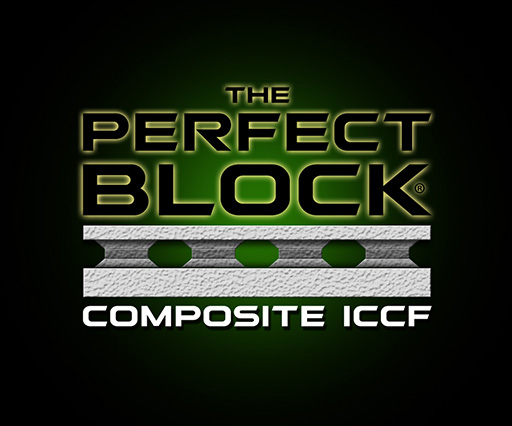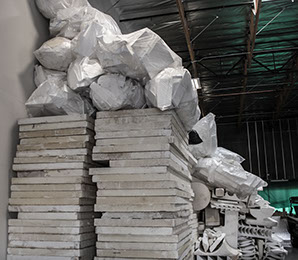Commercial EPS Recycling in Canada
Regarding commercial recycling (from business and institutions) versus residential recycling, commercial recycling is done directly by private firms rather than through the local municipality. Government departments that handle recycling have lists of private recyclers.
Foam Recycling Spreads Across Canada
Foam and rigid expanded polystyrene are a growing area of plastic recycling and that is expanding to communities around the world. Montreal is yet another major city in North America that is committed to recycling the polystyrene waste that their community produces. The city has extended their pilot foam-recycling program for the next five years with a new collection facility at the Lasalle Eco Centre in Montreal. The project is being run in conjunction with the Canadian Plastics Industry Association.
The project has already proven to be worthwhile, collecting 2.5 tons of polystyrene in the first year of the pilot program. The city is looking at more ways to increase their foam recycling.
Montreal is one of several cities throughout Canada that are recycling polystyrene. Currently there are 181 cities and towns that offer curbside collection for rigid polystyrene and 45 municipalities that pickup foam packaging. There are also 40 different drop-off locations across the country.
The post-consumer and post-commercial EPS recycling in 2004, 2006, 2008 and 2010, 2012, and 2016 were 25 million pounds, 32 million pounds, 33.6 million pounds, 37.1 million pounds, 36.7 million pounds and 63 million pounds, respectively.
It is important to note that recycling every ton of EPS saves as much as 637 gallons of oil.
Recycling EPS: solving an environmental headache
Pound for pound, it takes much more landfill space than anything else buried there. According to some estimates, EPS waste amounts to 20-30% of the volume of landfilled trash. It makes up to 80% of the plastic litter in our oceans. Small particles of it look like food to many marine animals, but it has no nutritional value. Worse, it gradually kills them by clogging up their digestive systems.
Resources; Canadian Plastics Industry Association (CPIA)
The Canadian Plastics Industry Association (CPIA) is the voice of the Canadian Plastics Industry. With over 2,422 companies employing 76,530 workers, Canada’s $17.6 billion plastics industry is a sophisticated, multi-faceted sector encompassing plastic products manufacturing, machinery, molds, and resins.
What’s the Answer? The Perfect Block™ (TPB)!
TPB is an insulated composite concrete form (ICCF / ICF) made from 100% recycled expanded polystyrene (EPS) ground in to an aggregate mixed with Portland cement, proprietary additives, and water then cured in a mold. The ICCF/ICF form when cured is a sturdy, rigid, and dense block. The block has to be strong and dense to hold the extreme pressures exerted on it when grouted solid with heavy wet concrete grout with an 8-9 inch slump. The hardness of the block makes it difficult for rodents and insects to burrow in to it. Additional deterrents to burrowing rodents: the materials the block is made from have zero food value to rodents or insects and the lime in the cement is a natural pesticide and fungicide and is an irritant and repels rodents and insects. Portland cement has pozzolanic material in it which means that it will react with water and harden, even when it is expended, it will harden to a degree, so if ingested by the rodent, the rodent’s life expectancy would be further threatened. With this new technology readily available successful EPS recycling has finally become a reality.
Sustainable home construction has put a new emphasis on expandable polystyrene insulated homes. The demand for a more efficient, energy saving, sustainable home has led to great innovations with improved insulation techniques using expanded polystyrene. Insulated concrete forms and structural insulated panels have become the 21st century’s answer to traditional building methods. The performance of new building techniques improves insulation, provides a model for less waste, and improves on the practice of sustainability in the building industry.
Insulated composite concrete forms have become what should be a necessary and sensible transition from traditional construction methods. ICCF’s offer much more insulation than traditional building practices. From sub-level to multi-floored buildings, the building practice provides more insulation and energy efficiency than that of traditional construction practices. Sound-barrier protection is vastly improved, as well as the overall stability and protection from nature’s destructive forces.
There are claims that total energy savings is more than 50% when compared to traditional wood framed homes.
In a study performed by Oak Ridge National Laboratory, “Dynamic Thermal Performance and AirTightness Effects of Concrete and Masonry Walls” and the Department of Housing and Urban Development, “Insulating Concrete Forms: Installed Cost and Acoustic Performance.” Houses built with ICCF exterior walls require an estimated 44 percent less energy to heat and 32 percent less energy to cool than comparable frame houses.
Additional studies from the Cement Association of Canada (CAC) and the Northwest Territories Housing Corp. (NWTHC) show that homes constructed with ICCF/ ICF above and below grade wall construction have reduced air infiltration compared to other wall assemblies.
1. How tall can ICF walls be built?
ICCFs have been engineered and built to 48 plus feet tall (free standing/load bearing). It is important to note that in most applications, ICCF projects can be designed using ACI 318 and are designed like any other steel reinforced concrete wall. Residential projects of up to two stories may also be designed in accordance with the IRC Section R611 or the Prescriptive Method for Insulating Concrete Forms in Residential Construction (EB118)
2. Are ICCFs code approved?
Yes. Every major code body in North America, including ICC and CCMC, has approved ICCFs. Also, ICCFs are listed as a prescriptive method of building in the International Residential Code and can be built to
commercial design specification using the International Building Code. ICCFs / ICF are also listed as a building system in the newest edition of the Canadian National Building Code.
Please feel free to ask any questions you like regarding The Perfect Block and its use as a truly green 100% recycled EPS building material.
Please visit our website with your questions and to review the benefits and the compliance to all codes.
https://theperfectblock.com/compliance-and-testing-reports/

